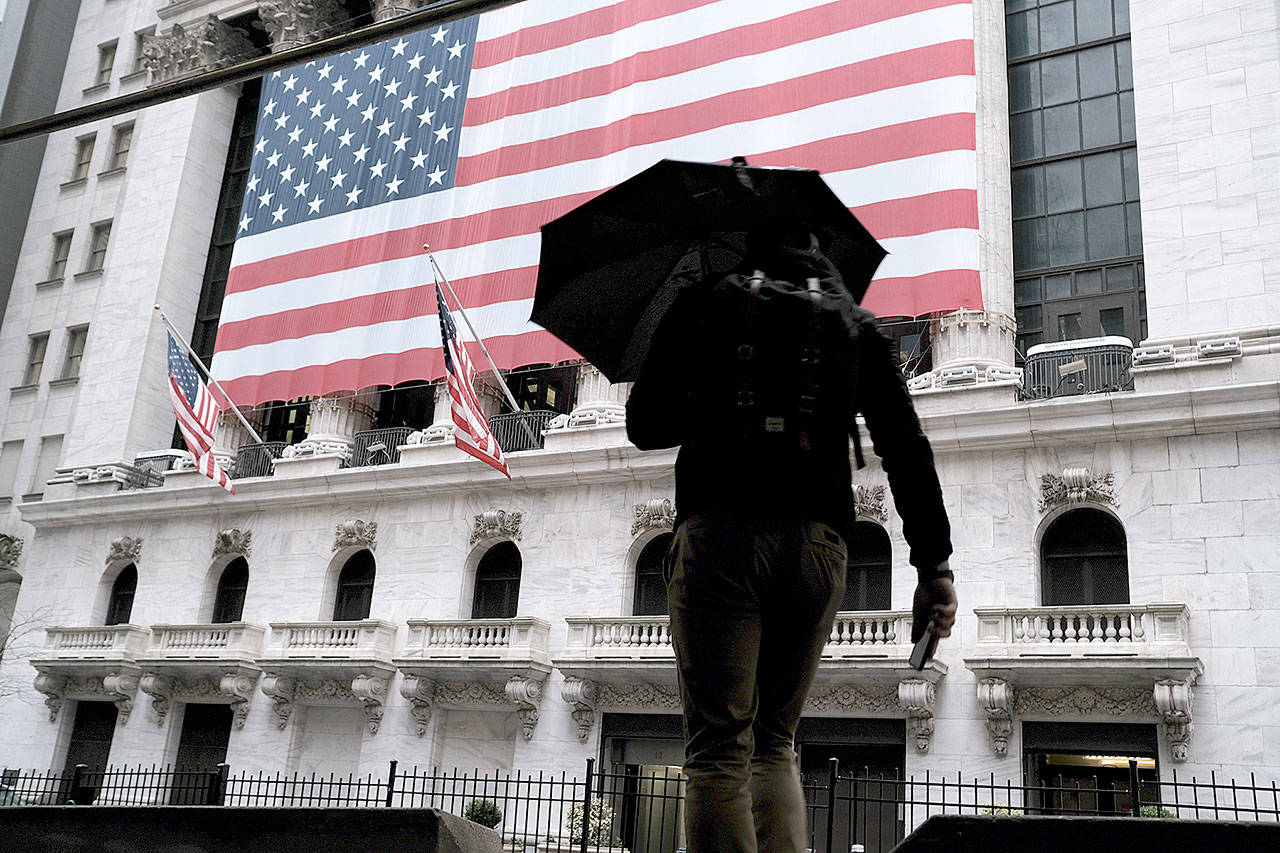By Joseph N. DiStefano
The Philadelphia Inquirer
The coronavirus shutdown and the oil-price collapse has driven U.S. stocks and interest yields back down to Obama-era levels.
“In other words, the S&P 500 unwound three years’ worth of gains in 18 trading days,” laments Matt Topley, a partner at Fortis Wealth, in Tuesday’s daily Topley’s Top 10 newsletter.
The Dow-Jones Industrial and Transportation indices fell worse. And the Russell 2000 index of small-public-company stocks is back at 2016 levels. If you’re saving for retirement, you might as well have put your money in the bank, at Tuesday morning prices. But of course you might miss the recovery.
The three-week drop was larger in points, but similar in proportion, to the three-week 2008 market collapse after Lehman Bros. went bankrupt, sparking the financial freeze that led to the Great Recession.
And here’s a new consensus. “We now forecast a global recession this year,” with world production rising no faster than population, and maybe declining, warns Paul F. Gruenwald, global chief economist at S&P Ratings, in a report to clients.
China’s economy has been “hit far harder than projected,” even with its recent “tentative stabilization,” added Gruenwald. Europe and the U.S. are headed into similar declines, with shutdowns leading to a “demand collapse” in the second quarter before easing this fall or winter. Governments are just beginning to “loosen the purse strings’ and help people who are losing their livelihoods.
But “it’s not 2008 again,” insists Mike Pyle, global chief investment strategist for BlackRock, the largest U.S. money manager, in an article Topley excerpted and linked to.
Pyle compared the coronavirus “shock” to “a large-scale natural disaster that severely disrupts activity for one or two quarters, but eventually results in a sharp economic recovery.”
That depends, as always in crises, on government bailouts. Already the Federal Reserve cut interest rates to zero (as it did following the 2008 crash), accelerated its bond-buying to keep credit markets working, and arranged to supply dollars to foreign central banks as needed, Pyle noted.
President Trump approved state-of-emergency federal disaster funding, Congress is fast-tracking health care and paid-leave extensions, and there’s more in the works: U.S. Sen. Pat Toomey, R-Pa., is pushing for broader relief, and U.S. Sen. Mitt Romney, R-Utah, is among those embracing Democrat Andrew Yang’s proposal for a cash subsidy as a quicker fix for American workers than an Obama-style payroll-tax break.
Topley himself sees key differences between the fall 2008 and winter 2020 crashes.
“This is a health crisis, not a credit crisis. And traditionally, health crises lasted months not years,” he told me. And when markets fall sharply they also tend “to rebound sharply.”
The 2008 crisis ended a bubble real-estate market, with unsustainable asset prices. By contrast, Topley says, the U.S. economy, pre-virus, “was in relatively good shape, low unemployment — and slightly rising wages, though not as much as we should see.”
American banks, also by contrast with 2008, “are in the strongest capital position they’ve ever been in,” thanks partly to tougher capital requirements added in response to the last recession. “The ratio of consumer debt to gross domestic product is a lot lower than it was in 2008. That’s all the opposite of 2008, when banks were very leveraged, and consumers were very extended. This is better.”
Add to it low interest rates — for homebuyers and profitable businesses, though rates are still much higher for credit card and car-purchase borrowers — plus falling gas prices. “And it’s like a massive tax cut. But it will take some time for companies and consumers to refinance” and get the benefits of lower rates.”
What’s worse — even compared to the 9/11 shutdown that briefly halted air travel and paralyzed lower Manhattan after the 2001 terrorist attacks — is the “trickle effect because of the total shutdown across the country, Topley added.
Low finance costs and cheap fuel won’t help restaurant, bar and retail shop owners facing weeks or months of near-zero sales, or energy companies that won’t be able to pay back their loans, he pointed out.
And it’s not only many thousands of small and neighborhood businesses that are in danger: “Just in 2016 you saw more than 100 energy bankruptcies in the Marcellus Shale” and other fracking natural gas zones, Topley noted.
So “we are going to see a massive government bailout. This time, they have to focus on small business and working-class people. Those are small-margin businesses and employers. They can barely survive shutting down for a month.”
How long can the downturn last? Topley posted a chart by JonesTrading’s David Lutz showing post-World War II bear markets (down more than 20%) have all lasted a year or more.
But he also posted a link from hedge-fund journalist Jacob Wolinsky’s ValueWalk newsletter, suggesting it could last as long, not longer, than coronavirus fears: the Shanghai Stock Exchange Index, after plunging in January and February as coronavirus COVID-19 spread from China’s Wuhan province to coastal cities, has already rebounded above last year’s lows since the official case growth count has slowed.
Topley also posted Ritholtz Wealth Management analyst Michael Batnick’s tongue-in-cheek “Psychology of a Bear Market” chart, which plots stock-collapse reactions from “Healthy Correction” (down 10%), through “I love a good sale” (-15%) and “WHAT IS HAPPENING?” (-35%), to “Never coming back” (-55%).
Point being, if stocks do fall that low, they’ll presumably be safer to buy, if you have anything left to buy with.



